Abditosaurus kuehnei – The First New Dinosaur of 2022
The first new dinosaur to be scientifically described in 2022, hails from the Late Cretaceous of the southern Pyrenees of Spain and it’s a giant. At an estimated 17.5 metres long, Abditosaurus kuehnei was probably the largest dinosaur on the European archipelago some 70.5 million years ago (Maastrichtian faunal stage of the Late Cretaceous) and its fossils represent the most complete titanosaur known from Europe described to date.
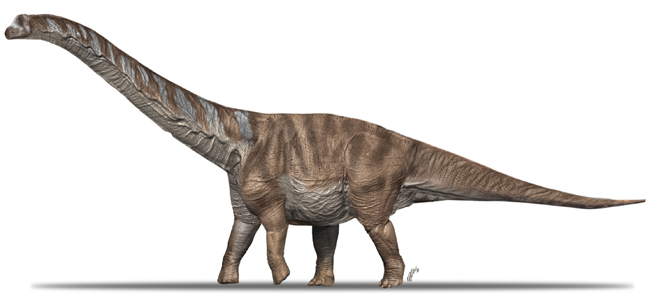
A Dinosaur That Took Decades to Discover
During the Late Cretaceous sea levels were exceptionally high and much of the continent of Europe we know today was underwater. The landmass of Europe was divided into a series of islands, this archipelago is known to have supported a wide variety of different types of non-avian dinosaur, titanosaurs were present, although none of the scientifically described genera would have matched Abditosaurus in size.
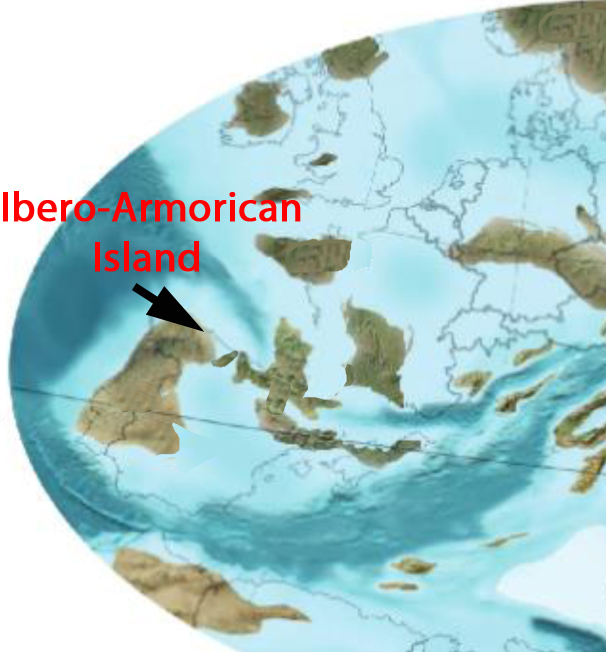
Related to Titanosaurs from Gondwana
The new titanosaur taxon demonstrates an unusual combination of characters not seen in other Ibero–Armorican titanosaurs. For example, it had a very robust humerus with a distally expanded deltopectoral crest, an anatomical characteristic typical of the Saltasauridae family of titanosaurs. A phylogenetic analysis carried out by the research team, who included Doctor Albert Sellés, a palaeontologist with the Institut Català de Paleontologia Miquel Crusafont at the Universitat Autònoma de Barcelona and the Museu de la Conca Dellà, nests Abditosaurus within a clade of South American and African saltasaurines and away from European titanosaurs. This suggests that Abditosaurus migrated to the Ibero-Amorican island around 70.5 million years ago when a temporary land bridge united the island with northern Africa.
Further evidence suggesting that dinosaurs migrated from Africa to the island was found at the dig site. Dr Albert Sellés, one of the co-authors of the scientific paper, explained that eggshell fossils from a titanosaurian oospecies known from Gondwana were also discovered.
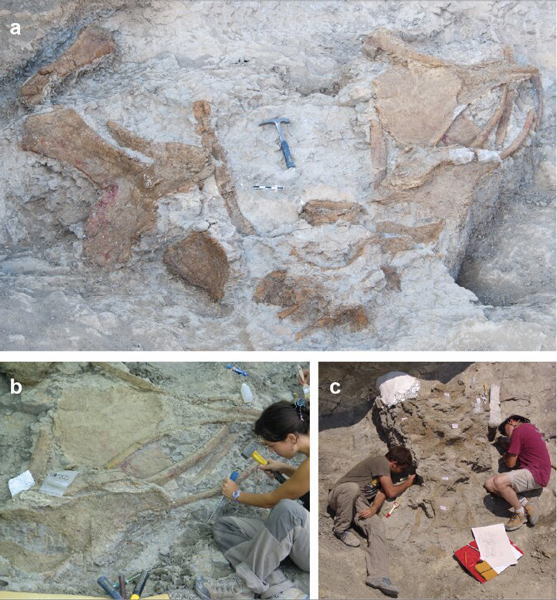
The “Forgotten Reptile”
German palaeontologist Walter Georg Kühne found the first fossil evidence of this large dinosaur in 1954 when exploring Upper Cretaceous deposits near the small town of Orcau (Catalonia). These fossils were despatched to the Instituto Lucas Mallada in Madrid. The following year Kühne returned and collected more bones. No further excavations took place until 1986, when the site was opened up again by a field team from the Institut de Paleontologia de Sabadell (Barcelona) which found dorsal ribs and part of the sternum. From 2012 to 2014 the dig site was opened up once more, this time by a joint Museu de la Conca Dellà, Institut Català de Paleontologia and Universidad de Zaragoza expedition and further fossil material was removed.
The generic name is derived from the Latin word “Abditus” (meaning forgotten) and the Greek word “sauros” (lizard), in recognition of the protracted excavation. The specific name honours Professor Walter Georg Kühne.
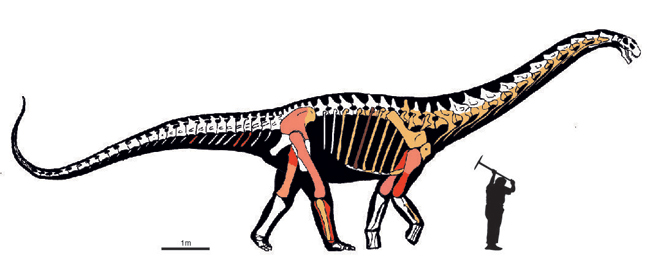
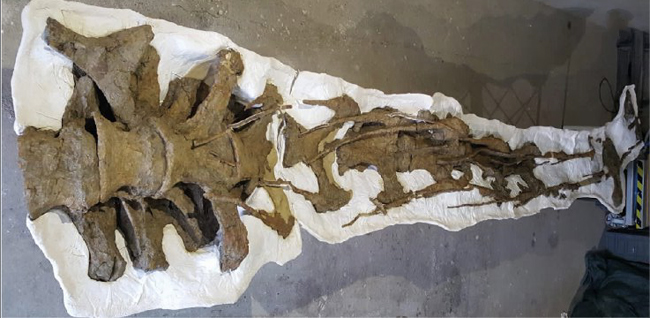
The photograph above shows the neck bones of Abditosaurus recovered from the dig site. Although famous for their long necks, the fossil record of sauropod cervical vertebrae is surprisingly sparse.
To read an Everything Dinosaur blog post that summarises some of the problems of restoring sauropod specimens when palaeontologists have only limited information about the size of the dinosaur’s neck: How Much Do We Know About Sauropod Necks?
The scientific paper: “A titanosaurian sauropod with Gondwanan affinities in the latest Cretaceous of Europe” by Bernat Vila, Albert Sellés, Miguel Moreno-Azanza, Novella L. Razzolini, Alejandro Gil-Delgado, José Ignacio Canudo and Àngel Galobart published in Nature Ecology & Evolution.

